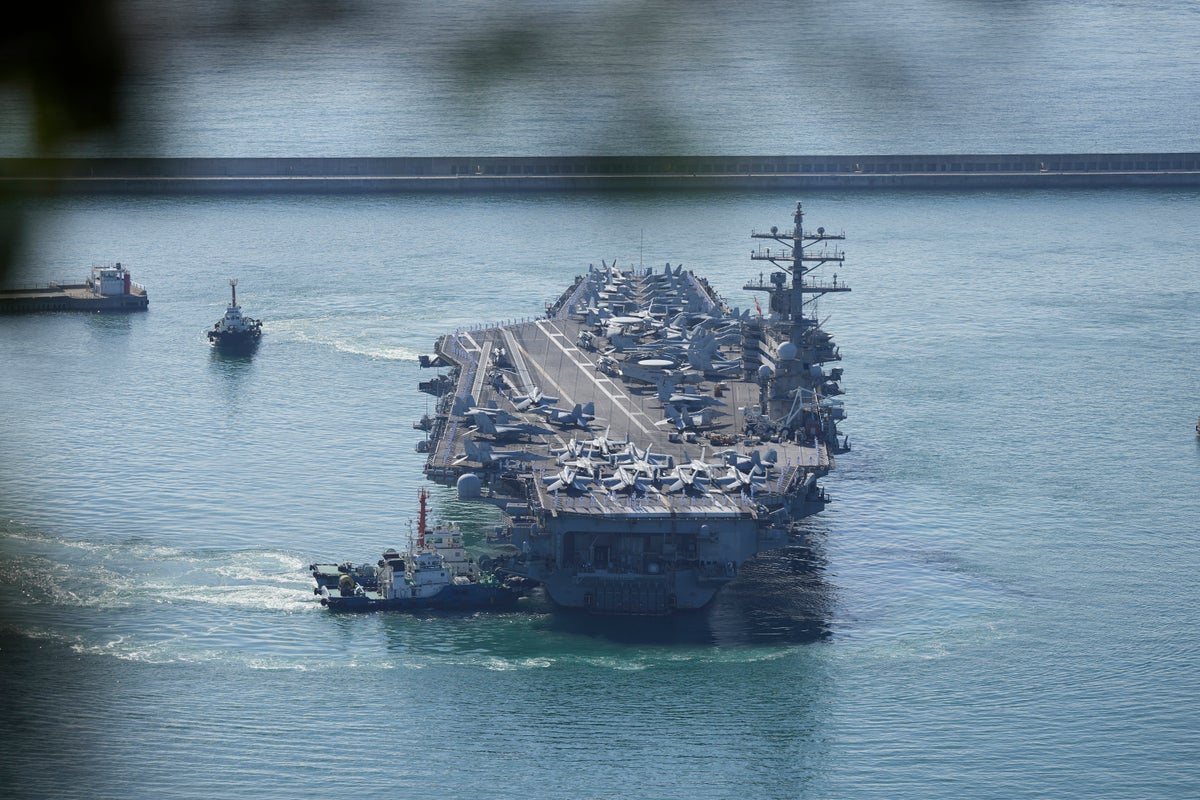
The nuclear-powered aircraft carrier USS Ronald Reagan arrived in the South Korean port of Busan on Friday ahead of the two countries' joint military exercise that aims to show their strength against growing North Korean threats.
The joint drills will be the first involving a U.S. aircraft carrier in the region since 2017, when the U.S. sent three aircraft carriers including the Reagan for naval drills with South Korea in response to North Korean nuclear and missile tests.
The allies this year have revived their large-scale military drills that were downsized or shelved in previous years to support diplomacy with Pyongyang or because of COVID-19, responding to North Korea’s resumption of major weapons testing and increasing threats of nuclear conflicts with Seoul and Washington.
The South Korean navy said its combined training with the Reagan battle group is meant to boost the allies’ military readiness and to show “the firm resolve by the Korea-U.S. alliance for the sake of peace and stability on the Korean Peninsula.”
The North Korean threat is also expected to be a key agenda when U.S. Vice President Kamala Harris visits South Korea next week after attending the state funeral in Tokyo of slain former Japanese Prime Minister Shinzo Abe.
The Reagan’s arrival in South Korea comes after North Korean leader Kim Jong Un told Pyongyang’s rubber-stamp parliament this month he would never abandon his nuclear weapons and missiles he needs to counter what he perceives as U.S. hostility.
North Korea also passed a new law that enshrined its status as a nuclear power and authorized the preemptive use of nuclear weapons over a broad range of scenarios where the country or its leadership comes under threat.
Sung Kim, the Biden administration’s special representative for North Korea, met with South Korean counterpart Kim Gunn in Seoul on Thursday where they expressed “serious concern” over the North’s escalating nuclear doctrine spelled out in the new law, South Korea’s Foreign Ministry said.
The diplomats reaffirmed the U.S. commitment to defend South Korea in the event of a nuclear war with the full range of its military capabilities, including nuclear. The allies also maintained their months-old assessment that North Korea is gearing up to conduct its first nuclear test since 2017 and discussed “stern” countermeasures to such an action, the ministry said.
North Korea has dialed up weapons testing to a record pace in 2022, launching more than 30 ballistic weapons including its intercontinental ballistic missiles since 2017, as it exploits a divide in the U.N. Security Council deepened over Russia’s war on Ukraine.
While North Korea’s ICBMs garner much of U.S. attention because they pose a potential threat to the American homeland, the North has also been expanding its arsenal of nuclear-capable, shorter-range missiles designed to evade missile defenses in South Korea.
North Korea’s expanding arsenal and threats of preemptive nuclear attacks have triggered concerns in South Korea over the credibility of the U.S. “nuclear umbrella” protecting its allies in the event of war.
South Korean President Yoon Suk Yeol, a conservative who took office in May, has vowed to enhance South Korea’s conventional missile capabilities and work with the Biden administration to develop more effective strategies to deter North Korean attacks.
Senior U.S. and South Korean officials met in Washington this month for discussions on the allies’ deterrence strategies and issued a statement reaffirming that “any (North Korean) nuclear attack would be met with an overwhelming and decisive response.” The statement said the United States reiterated “its ironclad and unwavering commitment to draw on the full range of its military capabilities, including nuclear (one)” to provide extended deterrence to South Korea.







